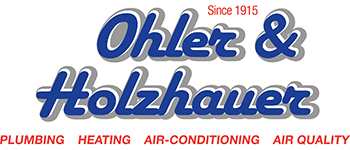
A furnace is often a background player at home, helping keep you warm during the cold winter months. It frequently doesn’t get noticed until a malfunction appears.
One cause could be that your furnace has a cracked heat exchanger. It can potentially be hazardous, so it’s critical to learn the signs of a cracked heat exchanger and what you can do if you believe that is the problem.
What Is a Heat Exchanger in a Furnace?
A heat exchanger transfers heat from the combustion chamber of your furnace to the air that flows inside the system. It generally accomplishes this with coils or tubes that heat up the air while functioning as a barrier to keep byproducts produced in the combustion chamber, called flue gasses, from escaping out into your home.
Is a Cracked Heat Exchanger Dangerous?
Thanks to its important role, it shouldn't come as a surprise that a cracked heat exchanger can be very dangerous. Cracks in the heat exchanger can permit dangerous gasses – such as carbon monoxide, which can be lethal – to be distributed throughout your home.
For this reason, never run your heating if you think it has a cracked heat exchanger, as this could make the entire household sick. Contact an HVAC professional right away if you think your heater has a cracked heat exchanger that should be repaired.
Four Symptoms of a Cracked Heat Exchanger:
- Furnace switches off: A cracked heat exchanger can cause your furnace to shut off.
- Strange Smells: If the air escaping your furnace has an intense chemical scent, it may be evidence gas is slipping through cracks in your heat exchanger. These gasses, which will often smell like formaldehyde, are a common warning sign.
- Carbon monoxide alarm initiates or you feel health problems: If a cracked heat exchanger is releasing carbon monoxide into your home, your carbon monoxide alarm may go off or family members could struggle with signs of carbon monoxide poisoning. Complications include headaches, dizziness, weakness, nausea, vomiting or feeling tired. If an alarm goes off or you feel unwell, exit the home right away and then call for help.
- Soot: If you find black sooty accumulating on the exterior of your furnace, it’s an indication something could be seriously wrong.
What to Do if Your Furnace Heat Exchanger is Cracked
If you worry your furnace has a cracked heat exchanger, call a professional well versed in furnace installation Port Clinton right away so they can examine your system and, if required, perform a furnace heat exchanger replacement. Costs often differ depending on the situation, but estimates often hover around $1,000 to $3,000.
Estimates aside, the good news is that heat exchangers are often protected by the warranty. It's a good idea to check the warranty paperwork on your furnace, since while the warranty might not cover the entire cost of repairs, it still may significantly shrink your bill.
How to Avoid a Cracked Heat Exchanger in Your Home
One of the most convenient ways to minimize the risk of problems in your furnace overall is via regular furnace maintenance. Furnaces offer the most benefits when they work efficiently. Hiring a trained professional to examine your furnace for broken-down parts, dirty filters and other common problems can keep you from getting a big bill later on.
It’s also a good idea to inspect your furnace filters every few months – it’s encouraged some filters be swapped out every 90 days or sooner if they are dirty or grimy. While the filters aren't connected to the heat exchanger itself, the strain of dragging air through a clogged filter makes the entire furnace work longer to complete its job. And the harder your furnace works, the more strain parts like the heat exchanger will endure.
